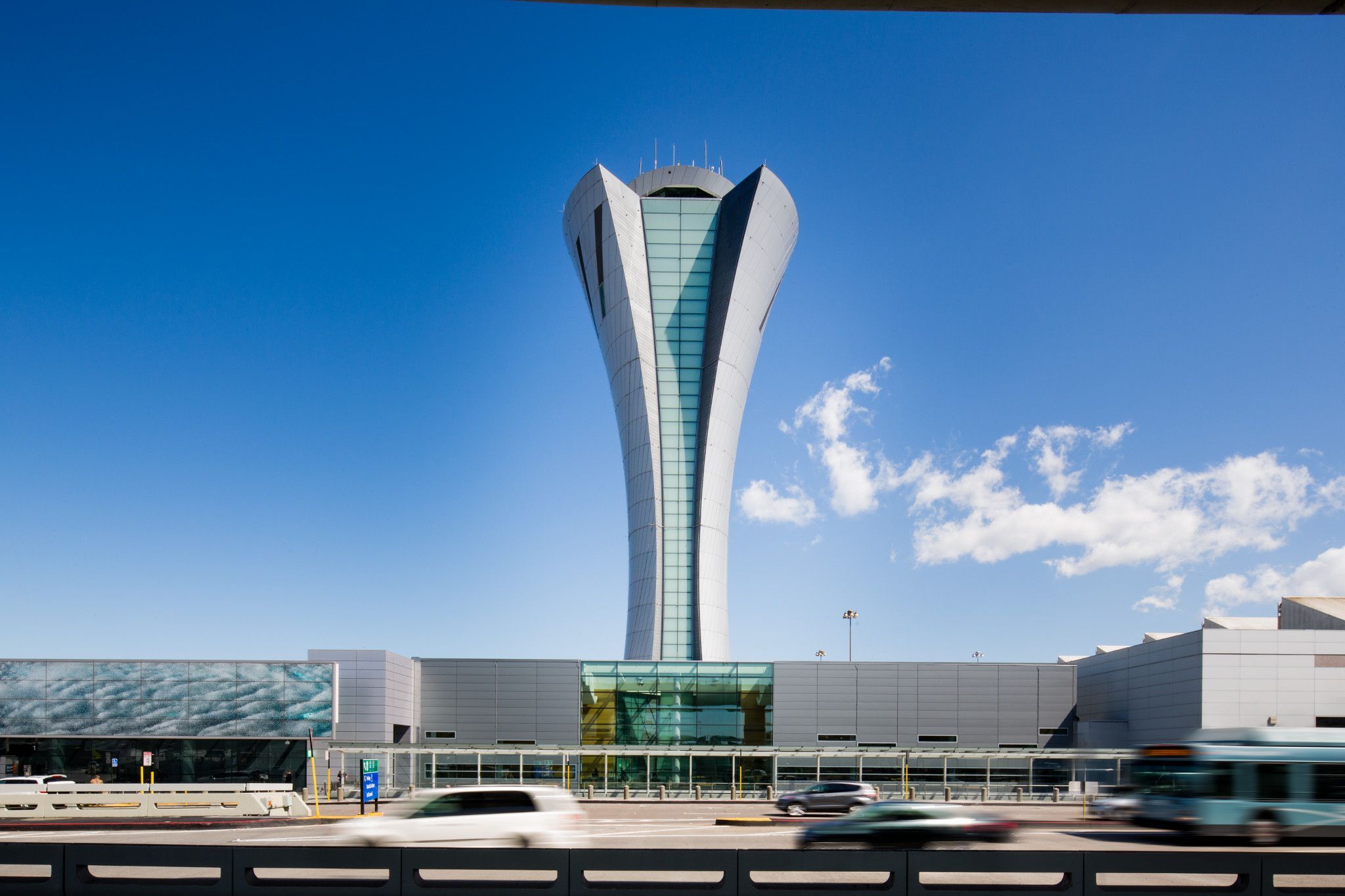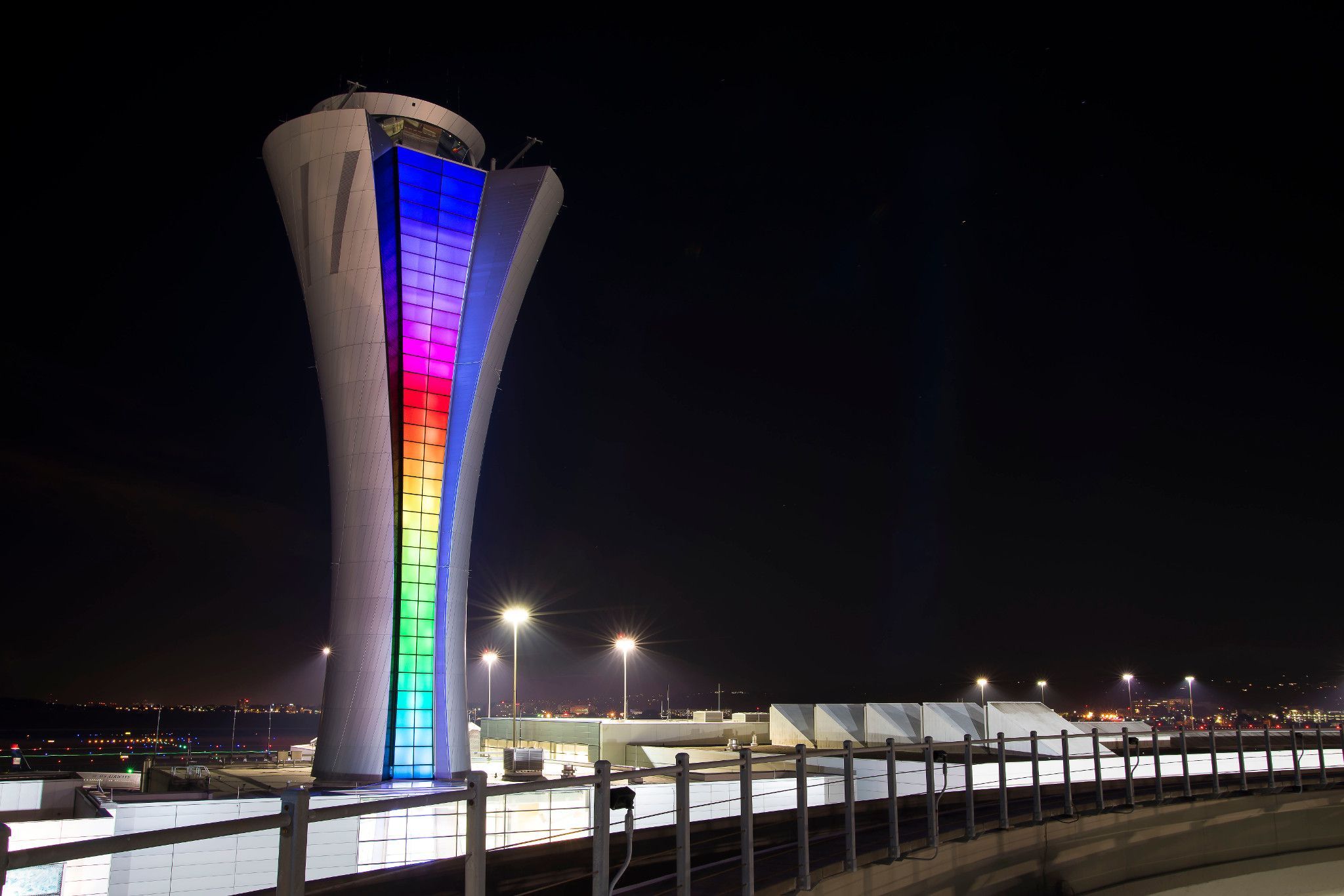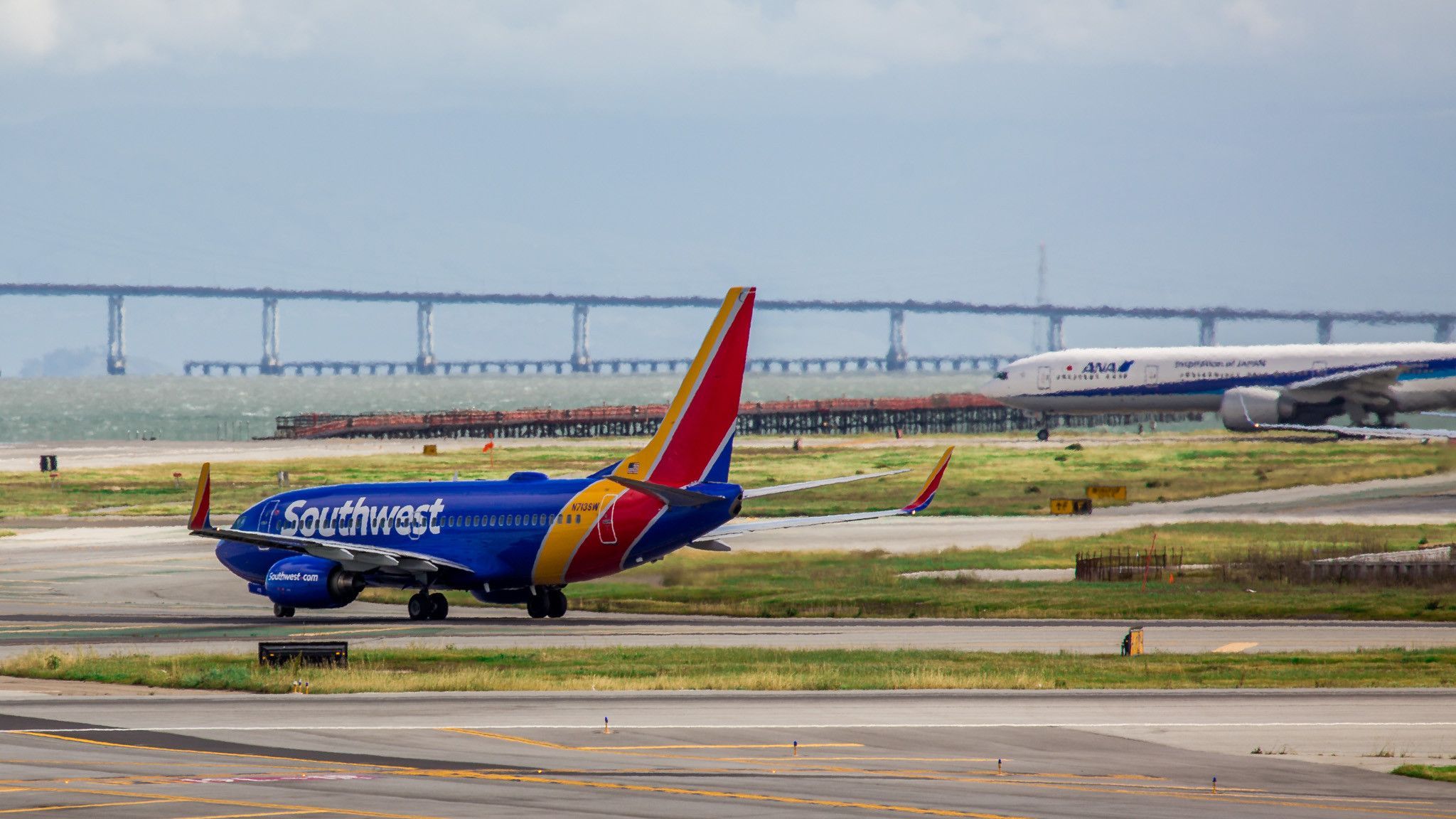Located only 2.5 miles from the San Andreas Fault, San Francisco International Airport (SFO) is in an earthquake-prone zone. In 2016, a project to rebuild its control tower between Terminals 1 and 2 was completed. It was constructed with greener technology and was also built to withstand seismic events of 8.0 magnitude.
A combination of striking beauty and updated seismic standards, the airport control tower received abundant accolades upon its completion and is known for being one of the best in the world.
The control tower project
Beginning in June 2012, SFO and the Federal Aviation Administration (FAA) launched the $150 million project together. SFO would invest $69 million into it and be responsible for integrating the tower into the existing airport structure and the tower's aesthetics. The FAA invested the most, at $82 million, paying for the costs of the building itself.
The project's main goal was to update the structure to meet current seismic standards, the FAA said. Its predecessor was in operation since 1954, but retrofitting the existing building wasn't seen as "feasible," so the airport decided to strip it and construct a new one.
The building was designed by Colorado-based Fentress Architects and Kansas City-based HNTB. In the end, the structure was 220 feet tall, and the 650 square-foot controller section gave air traffic controllers 235-degree views of the airport's runways and taxiways, the FAA explained.
While the control tower was built to address concerns over its ability to withstand earthquakes, it was also constructed to be eye-catching. According to Fentress, the "twisting façade" is inspired by the passenger terminal's color, massing, and materials. Doug Yakel, SFO's public information officer, also said that while the structure was made to fit within the terminals, it was also designed to be an "iconic landmark."
Airport Director Ivar C. Satero said at the time of completion:
"The result is a masterpiece, replete with cutting-edge safety engineering, advanced technology, and the visual dynamism to represent SFO for decades to come. I truly appreciate the vision, dedication, and teamwork that made this exceptional facility possible."
As well as the control tower, the project includes a large office at its base, known as the 'Integrated Facility,' Fentress said.
Alongside Fentress, HNTB was tapped as the master architect to complete the conceptual works and design the tower up to 45 % completion. The company said its most significant challenge was "squeezing" it into the narrow gap between terminals 1 and 2.
So, how can it withstand earthquakes?
The California Earthquake Authority says that scientists believe the San Andreas Fault line could cause a destructive earthquake in California by 2030. This possibility isn't far-fetched, as the fault caused one of the biggest earthquakes in California in 1906 at a scale close to 8.0, killing around 3,000 civilians.
While earthquakes have been the cause of major city-wide lockdowns, canceled flights, and airport disruptions, air traffic controllers are vital to the safety of aircraft in the sky, even during a natural disaster.
According to Fentress, the control tower includes a 'post-tension' system, which helps the structure not sway with extreme winds or a large earthquake. Post-tensioning is used to reinforce concrete and increase its strength by being compressed.
Rafael Sabelli, a principal and director of seismic design at engineering company Walter P Moore explained in Structure Magazine the post-tensioned cast "resists extreme earthquakes and wind-induced vibration." Sabelli also said the base building has concrete walls and steel gravity framing that can resist "blast threats" from neighboring roadways. He said:
"A performance-based seismic design methodology was adopted early in the process, allowing flexibility in the choice of structural system and reliable and customized performance objectives. Located 2.5 miles from the San Andreas Fault, the control tower is designed to remain fully operational at the Design Earthquake level and to provide safe exiting and no collapse at the Maximum Considered Earthquake level."
In fact, the post-tensioned core is supposed to re-center itself in the event of an earthquake and if it subsequently deforms the building. Sabelli said the project demonstrated the "feasibility" of building "damage-resistant, self-centering structural systems economically and efficiently," as the SFO and FAA completed it within budget and on time.
Stay informed: Sign up for our daily and weekly aviation news digests.
Built with sustainability in mind
While the control tower is known for its strength and aesthetics, it was also built with sustainability in mind. In 2011, SFO established its sustainability roots by opening the first LEED Gold terminal. Then in 2016, SFO created a Strategic Plan to achieve net-zero carbon, ahead of many other national airports. By 2021, the airport had received around five million blended gallons of sustainable aviation fuels (SAF).
The control tower was built with solar panels and eco-friendly materials in its mechanical and technical systems. SFO and the FAA selected Ambient Energy to help the project reach Gold LEED certifications. The company provided energy modeling for Title 24 compliance, thermal comfort surveys, and fundamental and enhanced commissioning.
The company said the tower was predicted to save 12 % in energy use and 33 % in water use. Plus, over 75 % of the waste during construction was recycled.
Sources: The California Earthquake Authority, FAA, SFO, Structure Magazine,



